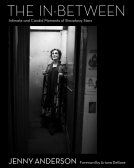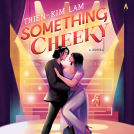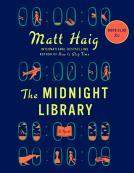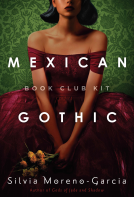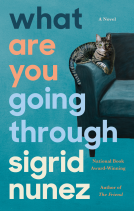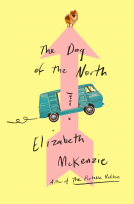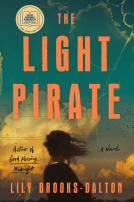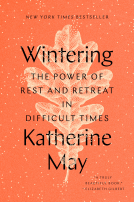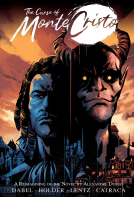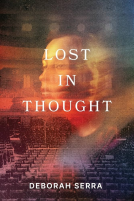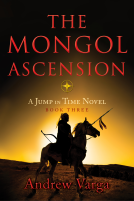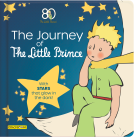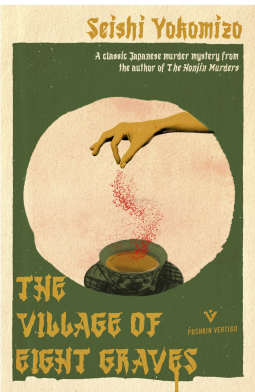
The Village of Eight Graves
by Seishi Yokomizo
This title was previously available on NetGalley and is now archived.
Send NetGalley books directly to your Kindle or Kindle app
1
To read on a Kindle or Kindle app, please add kindle@netgalley.com as an approved email address to receive files in your Amazon account. Click here for step-by-step instructions.
2
Also find your Kindle email address within your Amazon account, and enter it here.
Pub Date Dec 07 2021 | Archive Date Nov 22 2021
Pushkin Press | Pushkin Vertigo
Talking about this book? Use #TheVillageofEightGraves #NetGalley. More hashtag tips!
Description
Translated into English for the first time
Nestled deep in the mist-shrouded mountains, The Village of Eight Graves takes its name from a bloody legend: in the Sixteenth Century eight samurais, who had taken refuge there along with a secret treasure, were murdered by the inhabitants, bringing a terrible curse down upon their village.
Centuries later a mysterious young man named Tatsuya arrives in town, bringing a spate of deadly poisonings in his wake. The inimitably scruffy and brilliant Kosuke Kindaichi investigates.
Yokomizo is perhaps the most popular and feted crime writer in his country’s history. His richly atmospheric classic mysteries are a treat for any fan of Golden Age whodunits, taking the reader all over post-war Japan, from remote mountain villages to pirate-plagued islands and the bustling streets of Tokyo. Yokomizo loved to craft ingenious puzzle plots, inspired by the greats of British and American crime, such as John Dickson Carr or Agatha Christie, while his detective, Kosuke Kindaichi, is everything a reader could want from a sleuth: brilliant, eccentric, charming, and unassuming enough to be fatally underestimated by many a murderer. . .
Advance Praise
"This taut mystery provides an original variation on The Hound of the Baskervilles… Kosuke Kindaichi, Yokomizo’s Columbo-like sleuth, arrives to sort through the tangled puzzle and provide a satisfying solution. Fans of gothic-tinged fair play will be enthralled"-- Publishers Weekly (starred review)
Available Editions
| EDITION | Other Format |
| ISBN | 9781782277453 |
| PRICE | $14.95 (USD) |
| PAGES | 352 |
Featured Reviews
 Bookseller 732304
Bookseller 732304
Really nice and weird atmospheric Japanese's thriller. Japanese's books, authors and writing are something else. of course being translated we never know the real first feeling of the original language, but they are always very interesting and this one in particular is one of the good one I have read in the last couple of years!
Seishi Yokomizo was a famous Japanese novelist known for creating the character of crime-solver Kosuke Kindaichi, who was featured in 77 mystery novels. So far only a few of these novels have been translated into English. The Village of Eight Graves is the third (following The Honjin Murders and The Inugami Curse), although I'm optimistic that we'll be seeing more in the years to come since Pushkin Vertigo has been working on publishing translated version, and there's currently a fourth, Gokumon Island, slated for publication in 2022.
The Village of Eight Graves is a more complex mystery than the two previous Yokomizo novels I've read in English. It begins with a prologue that gives us the history of how the Village of Eight Graves got its name sets the stage for the murder mystery at the heart of the story. Many years prior to the beginning of the main story, a group of samurai traveled to the village, where they hoped to hide out and perhaps start new lives. But they were rumored to have had a vast treasure of gold coins with them, and eventually the villagers' greed gets the better of them and they murder the eight samurai. However, the gold was never found. When eight villagers die soon after, the legend of a samurai curse begins to take root. Several years later another massacre occurs, this time taking the lives of 32 villagers.
The story begins when the novel's narrator, a young man named Tatsuya raised by his mother with no knowledge of his birth or family history, is contacted by a lawyer who reveals to him his connection to a wealthy family from the Village of Eight Graves regarding matters of inheritance. Tatsuya then travels to the village to meet the family he never knew he had, unaware of the dark history that surrounds them. What follows is a labyrinthine tale with a colorful cast of characters and many more murders.
Kosuke Kindaichi doesn't appear much in this story, which is told only from Tatsuya's perspective. This story felt like a departure from both The Honjin Murders and The Inugami Curse, both of which featured a seemingly locked room murder committed under seemingly impossible conditions. Instead, here we see the deaths as they happen, and there are plenty of suspects at hand. In many respects, it's more a thriller than a traditional mystery novel. What I enjoyed most about this story is its masterful way of building tension and its brilliant use of atmosphere. There are many strong Gothic overtones with secret passages and underground caves, people hiding dark secrets, and a tinge of the supernatural.
If you'd told me thirty percent through this book that I would be rating it so highly, I might not have believed you. <i>The Village of Eight Graves</i> is one of those mysteries that takes its time to build to the point where you desperately want to know what's going on, and this feels very deliberate in hindsight. Yokomizo has taken a Christie-like turn in that his detective actually barely features in the novel; like several late Poirot books, Kindaichi only really shows up when it's time to actively solve the crime. Prior to that, the story is narrated by the young man who finds himself the focus of the murders in the aptly named Village of Eight Graves because of his assumed heritage. As a perfectly average fellow, he's decidedly out of his element, and this doubtless contributes to the somewhat plodding start - and the fact that pretty much everybody seems like they might not be trustworthy.
When the detective does pop up, things do improve remarkably; that the treasure hunting subplot and subterranean labyrinth also rear their heads at this point also helps. Interestingly enough, Kindaichi's entry on the scene also prompts us to start weeding through the myriad suspects, and while I did figure out who the killer was pretty early on, I think that's more a testament to how much mystery I read, although looking back afterward this is a fair play novel and I may not be giving Yokomizu enough credit for well-seeded subtlety.
<i>The Village of Eight Graves</i> is considered one of the greats of Japanese mystery fiction for a reason. It's deliberate, intelligent, and deceptive, and if the start feels slow (and yes, misogynist; those were the times), it more than makes up for it in the end game. It's a good mystery and an even better reminder that, as the saying goes, the devil really did make the small towns.
The synopsis describes this as Japan's most popular murder mystery series, and I can see why, Following Japanese tradition, the author gives readers all the clues, even if it’s not so easy to see whodunit until after it has been explained by Inspector Kindaichi. This volume also features secret underground caves and a hidden treasure, so it’s also partly an adventure novel besides a mystery. Tatsuya arrives to the titular Village of Eight Graves only to see a series of murders point directly at him. These kind of novels usually feature distinctive detectives, so I was surprised that Kindaichi is enough in the background that I didn’t really get a great idea of him. I was also frequently confused by the characters’ names - which is all my fault of course, since I don’t speak Japanese. Despite this, I was engrossed enough to go with the flow, and I particularly enjoyed the creepy ghost stories and the chases in the dark cavern. I also found the ending very satisfying and was surprised by the resolution of the mysteries.
I chose to read this book and all opinions in this review are my own and completely unbiased. Thank you, NetGalley/#Pushkin Vertigo!
I absolutely loved this! What a fantastic plot, beautifully written, intertwining the relationships between the characters in such an ingenious and realistic way.
Thanks to the publisher and NetGalley for providing me with a copy of this book in exchange for an honest review.
 Richard L, Reviewer
Richard L, Reviewer
Having read The Honjin Murders, I was delighted to get the opportunity to read The Village of Eight Graves a second case for Kosuke Kindaichi a renowned private detective.
Indeed I have also bought The Inugami Clan as I love a crime series and I have taken to author, Seishi Yokomizo’s gently paced writing and tense mysteries.
We all need to be grateful for the efforts and commitment of Pushkin Vertigo of revising old classics and often discarded authors, by bringing their work into an English translation. I have discovered Stefan Zweig’s writing in this way and these Japanese crime novels are another case in point. These gems, uncovered and sparkling in all their glory, enable others to share the beauty of forgotten mysteries. Check out Pushkin Press on line.
Set in a time of uncertainty, after the defeat in World War II, this novel is an insight into rural communities, local gossip, customs and superstitions. The author takes his time explaining both the geography and idiosyncrasies of village life. Almost unchanged over time, isolated and insular, The Village of Eight Graves is quite a threatening place for an outsider.
The story is told through Tatsuya who narrates his own journey to the village of his family. He has been called back from his city life to take charge of his ancestral home as the potential heir of the family estate. For various reasons many do not want him around; he has few friends outside his immediate household and his late father was a notorious man who went on a killing spree soon after Tatsuya was born. Indeed his presence seems to be a curse, the Spirit’s demand of retribution for historical events.
A series of killings start upon his return and suspicion quickly turns on him. His only hope seems to be a famous detective visiting these parts but strange happenings seem to compound local fears. In a sense he doesn’t know who to trust and as the murders continue without clear motive he is left more isolated and wishing he never left his city life.
A wonderful multilayered story that remains full of mystery and suspense. A true ‘who done it’ unlike anything you may have read before.
I loved the sense of place and time. There is tension and danger with each recounted incident. You feel the young man’s fear and his need to risk all for the sake of those he cares about. It appears there are clues aplenty, multiple suspects but little police action to apprehend the killer.
You even wonder if the narrator is being truly honest and it is no surprise when he feels the villagers’ hostility running into a lynch mob, seeing him as culpable for the mayhem that has overtaken the community.
But the book draws you in. You want to make sense of it all and so need to read on, almost hoping for the best.
Quite ingenious. Like a full deck of cards, each is turned over but only when all are face up do you begin to see the labyrinth of language, the cardsharp’s dodgy dealing and realise the dots were all there in plain sight. Joining them all up in the detective’s denouncement the author shows his skill and why he is viewed as a great mystery writer.
This was my second mystery novel by Seishi Yokomizo. The other one I read was "The Inugami Curse" where I had quite a few problems with the word choice of the detective and also with the foreshadowing. But the descriptions in this novel where in the most cases not nearly as offensive as in the other book, which could go in hand with the change of perspective as this book is not told from the detectives point of view. I think this makes it pretty interesting. We still find foreshadowing in this book as well but not nearly as much and predicting as in "The Inugame Curse". I guessed quite a few things in between but forgot them again until they were actually revealed, but that's what happens to me with most mysteries and it was still really enjoyable. But I must say the actual reveal at the end felt kinda off for me. Though the epilogue was funny to read.
Also because of personal matters it took me 10 days to read this book and if I had read it faster and all the details would have stayed with me I might have guessed more of the whole picture, so I would recommend reading it with a bit of time on your hand in one weekend.
Here already my rating: A solid 4/5 for me.
The next part might spoil you because I speak about tropes and the things I guessed so please refrain from reading if you want to read the book and want to guess along:
-
-
-
-
-
-
I love that again I get some femme fatale but the actual motive was a bit sad to be honest. Also I guessed that it was an ABC murder case but I can't pinpoint anymore if that wasn't because of some foreshadowing. Still it was clear to me pretty early on. I also had guessed the situation with eisen far before the reveal. But I forgot it again anyway so the reveal was still enjoyable. Just after that it started to feel a bit off. Also it was clear to me that they would let Miyako die at the end.
I want to mention one question was in my mind for most of the time in the second half of the book. How where the places of the cave known to the villagers but at the same time nobody knew of the caves. I think there I had some problem with the connection of all the different information.
On the one hand nobody knew these tunnels existed for they would have found the body of old man Tajimi there if they had known, but on the other hand half of the village used the caves and there were even superstitions about the different places. That had me a bit lost.
 Mallika R, Reviewer
Mallika R, Reviewer
My thanks to Pushkin Press and NetGalley for a review copy of this book.
While I have read and enjoyed a fair few Japanese titles, despite all good intentions, I hadn’t gotten down to picking up any mystery title yet; this book gave me the chance to remedy that, and I enjoyed it very much indeed. The Village of Eight Graves is the third of the 77 detective novels featuring detective Kosuke Kindaichi published between 1946 and 1980 to be translated into English under the Pushkin Vertigo imprint.
The Village of Eight Graves opens with the rather cruel and horrifying legend that gives the fictional village that is our setting its unusual name; the betrayal and murder of eight samurai hiding out in the village by the villagers, for the treasure they were rumoured to be carrying, resulting in the entire village being cursed. We fast forward in time to some twenty-six or twenty-seven years before the current events when the village is subjected to another set of shocking events, a murderous spree that claimed many lives, and was attributed to that very curse.
In the present, our narrator is twenty-eight-year-old Tatsuya, brought up by his mother and later step-father who one day discovers his true antecedents (it was his father who was responsible for all those deaths twenty-seven years ago). His ‘real’ family, or rather the family of his father has been seeking him as he is the heir to the family estate with his only (half) brother being on the verge of death. Alongside, his maternal grandfather has also come to town (Kobe) in search of him. But before Tatsuya can even set out for Eight Graves, his grandfather falls down dead, poisoned. Tatsuya also receives an anonymous threatening letter warning him off returning to Eight Graves. All the same, he is escorted by Miyako Mori, a young widow who’s been living in her ancestral home in the village, and who provides him much needed support on the journey and on his first entry into the village where he finds most villagers hostile to his arrival, believing that this will only unleash another bout of terror. And indeed, it does, for his grandfather’s death is only the first of a series of senseless murders that begin to take place in the village. And in each instance Tatsuya is the prime suspect. While the police and with them Detective Kosuke Kindaichi are investigating the case, and seem to at least partly believe Tatsuya, we essentially follow Tatsuya’s narrative all through as he tries to cope with his new surroundings, get to know his new-found family, and also come to terms with the terrifying events unfolding around him.
This enjoyable mystery/adventure unfolds somewhat differently from the conventional whodunit, for our narrator Tatsuya while looking into matters is not really following the Detective Kosuke Kindaichi, except for the times they interact; and so the police and Kindaichi’s investigations we learn of are only as Tatsuya learns them, and take place for the most part, off the page. The events as we follow them are Tatsuya’s narrative of his experiences which includes not only the mysterious and seemingly senseless murders that are taking place and which place Tatsuya at the centre of accusations but also his navigating his new-found family and the village, learning his mother’s story, and his exploration of family secrets and relationships.
While Tatsuya and the police are convinced the events taking place are entirely in the human realm, events unfold in a rather creepy and unsettling atmosphere for we have the background of the village curse, the murderous rampage that Tatsuya’s father went on, the superstitions and rumours doing the rounds, and also some ill omens like lightning splitting an ancient tree. This made for a pretty eerie background for out story to play out in even though we too, know that the answer is nothing to do with any curse.
Another aspect of the background which I liked was the feel we get of Japan in this period, just after the Second World War—the position people find themselves in, the changing face of things, and also people’s struggle to make ends meet. There is also a glimpse of myth and tradition in rituals, mentions of Tengus, etc. And then there is also the remote village we find ourselves in where superstition looms large, people seem easily manipulated, and the police despite their powers can do little to reign in a mob once provoked which makes the situation for Tatsuya rather grave, fear we can feel with him.
As far as the whodunit itself was concerned, I wasn’t able to guess which of the possible suspects might have done it for there were quite a few with reason enough. With Tatsuya as our narrator, rather than us following the detective’s perspective, I was also not sure how far we were to accept his version and whether we were to look for hidden meanings or inconsistencies. But the solution was satisfactory and there were some hints to it earlier in the book as well.
There is also an adventure thread related to the legend of the Samurais’ treasure and past events which takes Tatsuya and others exploring some underground caves and tunnels which had me thinking of old Enid Blyton favourites, and which was great fun. Tatsuya’s mother’s story and his relationship with his half-sister Haruko bring in some emotional moments and alongside, there is also a thread of romance.
This was all in all a very satisfying and enjoyable read, with a nice and creepy atmosphere, interesting mystery and characters, and quite a few parallel threads to keep one reading all through.
4.25 stars
I love this series!
It is a slightly familiar format, and one the author Seishi Yolomizo explores well - deep, dark family secrets, which when brought into open, give birth to jealousy, greed and ultimately ... murder. And here we have all those elements: a family saga of love and hate, revenge and redemption; many suspects but always one whom you are least likely to suspect; a suspenseful mystery, tied together by a long narrative that conveys the essence of the story, location and characters to perfection.
I love the character of Kosuke Kindaichi - a Japanese Columbo if you are wanting a comparison. Kindaichi is portrayed as being slightly eccentric, wearing a robe and trousers that have seen better days, as well as having bad dandruff. He also gets easily stressed and excitable, which brings on his stuttering. And yet beneath all of the yokel-like exterior, is an exceedingly clever detective. It goes to show that you should never judge a book by its cover (though Yokomizo's are fabulous!).
I cannot but suggest the reader delve into these mysteries for themselves.
This is an engaging whodunnit that had me second guessing all my theories the whole time I was reading it. There's murder, family history and village myths, murder, love and hate, murder, creeping around in the middle of the night and in caves, murder, maybe some treasure, murder, and a satisfactory end.
There are a lot of characters so it is best read in a short time period. This is a Japanese classic translated to English and I would definitely like to read another from this series.
 Leyla J, Reviewer
Leyla J, Reviewer
I read the two previous translations of Seishi Yokomizo and enjoyed them very much, this one was a little more entangled but very rewarding read. It is a little hard to get used to the characters and the style in which these stories are developed but again a great journey with a surprising ending.
I absolutely adored The Decagon House Murders, and have been avidly keeping an eye out for other English-translated titles by this author. Great!
•~Book Review~•
🍃
If you have heard the name 'Seishi Yokomizo', I have no doubt that you are well acquainted about the famous Kosuke Kindaichi detective mystery book ' The Honjin Murders '.
So here comes another one of the most famous Kosuke Kindaichi detective mystery novel ' The Village of Eight Graves '.
Far away from Japan, there's a small village hidden in deep mist with a bloody history, the killings of eight samurais from the Amago dynasty. Killed by the villagers out of greed for their golds. The death wrecks havoc so much so that the villagers finally repent and build them a shrine and hence comes the name of the village.
Many centuries pass by and one day, a young man Tatsuya arrives there and so does starts, the mysterious killings of eight people.
The history repeats.
And this time, the brilliant Kosuke Kindaichi investigates and solves the mystery.
How you ask? You have to read the book.
🍃
This is the first time that I have read a detective novel that unfurls in the perspective of one of the main characters but not the detective's.
The history was engaging, there were times where I felt my attention dwindling but the plot picks up from the middle and I was thoroughly engaged and couldn't put the book down.
I enjoyed the book very much.
The Village of Eight Graves is a fun, classic mystery novel. It has a frame narrative, i.e. "I found this manuscript but didn't write it," and a quirky detective. The narrator is not the detective, which was fun. The narrator, instead, is Tatsuya, the main suspect (to everyone except the detective Kosuke Kindaichi), so readers know he is not committing the murders, but are left in the dark as to who is. The history of the town, with all its supernatural elements, makes this closed room mystery extra suspenseful. Add hidden under ground tunnels, a mummified corpse, and villagers with torches, and the novel is right on the verge of being a paranormal thriller. I really enjoyed this book, and will go back and read the others in the series. I wish I had access to many more of them, so I hope the publisher keeps translating them!
There is always something about translations that intrigue me.
Japanese books have been rising in popularity across the Western market for years—see: Before The Coffee Gets Cold, There’s No Such Thing as an Easy Job, Convenience Store Woman—and as I read them, I’m always thinking about what the book must have read like in the original language.
What were the particular cadences in this book? What was the original author’s voice like? What references have been changed to better appeal to a Western audience?
I think the English translations of Seishi Yokomizo’s detective novels are some of the better translations I have gotten to read, especially with the release of The Village of Eight Graves.
In the third novel of the series, an orphan finds that he is the heir to the Tajimi inheritance, but when he travels to meet his long-lost family in their hometown, relatives suddenly begin dropping like flies.
The Village of Eight Graves has taken their name from a centuries ago curse, when the then-villagers had betrayed a group of samurais for their fortune, only to be cursed for eight generations with the samuarais’ dying breaths. Eight people will die per generation in exchange for the eight lives they took.
The curse strongly manifests in the Tajimi family, with one member of the family going on a killing rampage every generation. And now with Tatsuya’s return, the curse seems to be starting up again.
And with everyone turning against Tatsuya, only detective Kosuke Kindaichi can prove his innocence.
I adore the premise of The Village of Eight Graves; the generations-long curse is a trope well beloved in any Asian culture. And coupled with the tropes of forbidden love, filial piety and fate, the novel reads like an introduction to Asian drama, in the best way possible.
Like I’ve mentioned in my previous newsletters, even though I love just about any mystery novel, I tend to have trouble following the twists and turns and often rely on that final reveal to explain who the villain is. The Honjin Murder, the first in this series, was one of the rare books where I had no trouble following along due to how clearly every thought was explained.
I did also did find it somewhat funny that the villagers were so incensed at Tatsuya’s return, despite the fact that they were the ones who had originally betrayed the samurai and Tatsuya—who had barely ever existed within the village—was somehow personally responsible for the deaths of some strangers.
My only qualm about this book is that I found the romance subplot a little misplaced. I did see it coming, but maybe after reading too many romance books this year, I’ve been spoiled for what kind of pacing we should come to expect when two characters fall in love. I would argue that this flaw is one that is fairly easy to ignore; if I really wanted to, I could just skip a few paragraphs and it wouldn’t take anything away from the story.
If you’re looking for a nice murder mystery to wind up the year, The Village of Eight Graves by Seishi Yokomizo is a wonderful choice with enough twists and turns to keep any budding detective interested.
A place is called the village of eight graves. A place doesn’t get such a name without a bloody history that over the years gets transformed into legend — complete with its samurais and labyrinths, superstitions and curses, and even rumours of buried treasure!
Cut to post-war Japan and one young man is contacted by a lawyer, informing him that he is an heir to an affluent and influential family in the village of Eight Graves. But when he goes to this village, bodies start dropping like flies.
For someone who was quite bored while reading The Honjin Murders, I was completely hooked to the mystery and thrill of The Village of Eight Graves, despite some of its caricature-like characters.
However, for a book marketed as a detective Kosuke Kindaichi mystery, there wasn’t much presence of the detective himself in the book. A minor gripe in an otherwise enjoyable mystery/thriller.
 Michael S, Reviewer
Michael S, Reviewer
A fine piece of detective fiction, although the detective in question plays a relatively minor role -- the narration is from the POV of someone who is believed erroneously by some to be the culprit, who does a decent amount of investigation into the ever-increasing body count (in order to clear his own name). Some mysteries from decades ago come across as a little stilted now, but this book doesn't suffer from its age, and rather benefits from its sense of place and time -- part of the underlying tension in the eponymous village comes from the societal upheaval in postwar Japan, including city-dwellers returning to their home village after the cities they lived in having been so wrecked that they can't or don't want to live there anymore.
 Tracey E, Librarian
Tracey E, Librarian
Another fantastic offering from the reprinted Pushkin Vertigo series with a phenomenal work of translation. Once again the unkempt and imperturbable Detective Kosuke Kindaichi is investigating a locked room mystery with his usual air of nonchalance (imagine Columbo crossed with Sherlock). This time the story is set in a small Japanese village where the occupants have been cursed for generations and unfortunately a heinous historical crime appears to be repeating itself. I love this series of mysteries and look forward to further editions being reissued. I also have to give kudos to the funky cover artwork and jacket material. Fab stuff.
 Reviewer 836813
Reviewer 836813
What I liked: A very innovative murder mystery with a unique premise. The village characters we are introduced to are intriguing to follow. The murder plot was unpredictable and quite shocking. There are some supernatural elements which I enjoyed too. This book has it all; outrageous villagers, creepy grandmas, a cursed village, a hidden treasure, a weird love triangle, and an amazing mystery.
What I didn't like: The famous detective is in only 3-4 scenes and doesn't seem to have much impact on the story. The fact that almost every woman was throwing herself onto the main character was too much for me. And was everyone screwing their cousin back in the day!?
 Reviewer 811157
Reviewer 811157
I had so much fun reading this book! It had so many things I love in classic mysteries like family secrets in isolated, small villages and there's a potentially unreliable narrator.
The prologue tells us the history of the village and how it got its name and then we are introduced to Tatsuya, our narrator, who having been raised with no knowledge of his extended family has been informed that he has connection to a wealthy family in a remote village. So begins the drama.
I love that we get a feel for this period of Japanese history (post WWII) and how Seishi Yokomizo pulls in small town superstition with the myths/lores of the region to create a really unique atmosphere. I also really liked the fact that the book was from Tatsuya's perspective rather than Detective Kindaichi's, though that maybe because as this is only the second of the books I've read in the series I haven't grown attached enough to Kindaichi to feel his absence like I do in some of the Poirot novels where Christie does the same thing.
I would highly recommend this to fans of Golden Age mystery novels or anyone who is looking for a mystery/thriller novel that actually is more mystery than thriller.
Having read the first book Honjihn Murders, I was ecstatic to receive an eARC for this one. It has been translated into English by Pushkin Vertigo Press.
This is the third book in the mystery series featuring investigator Kosuke Kindaichi although the detective does not appear more than three or four times in the story. Reminded me of some of Agatha Christie novels.
The book is set in Japan post WWII and I loved how the author incorporated Japanese myths and lore to create a unique atmosphere.
This is not your conventional whodunit and I wasn't able to guess which of the possible suspects might have done it as they all had enough motive.
The creepy atmosphere, a multilayered tense mystery and interesting characters had me frantically turning the pages and staying up late to get to the end. Yokomizo's approach to storytelling by mixing clues, red herrings and fascinating social insight leading to the final reveal has me wanting for more of his works to be translated and published.
Highly recommend reading Yokomizo's works if you are an ardent Agatha Christie fan.
Thank you @netgalley and @pushkin_ for a digital review copy
The Village of Eight Graves is the third in Pushkin's translations of Seiko Yokomizo's classic detective stories featuring shambling Columboesque private investigator Kosuke Kindaichi.
This novel is narrated by a young man with complicated family relationships, whose arrival in a small rural village coincides with some horrific poisonings. There are dark secrets galore, hidden caves, samurai treasure and even a bit of a love interest. The body count gets quite high before it's all finally resolved!
An enjoyable addition to the series - I hope there are many more.
Thanks to the publisher and NetGalley for providing a review copy in exchange for honest feedback.
The title of the book was enough to give me the creeps and pick it right away. I was aware of the success of The Honjin Murders and The Inugami Curse by the same author, and that is why I decided to pick this book immediately when I saw it on NetGalley.
I was not disappointed. Terrible myths, curses, murders, madmen, fugitives, the prodigal son, a picturesque village, and a hidden treasure. Combined with brilliant story-telling and ingenious plot twists. And I was unable to put this book down. It was an absolutely thrilling and nerve-tingling ride. I enjoyed the mystery immensely and could never have imagined by whom and why the multiple murders were committed.
I like that the author explored the perspective that killers explore the superstitious nature of villagers to commit horrific deeds, by misusing old myths. The characters were so varied and immensely entertaining, and the mystery of the hidden caves and their ambiance and maze-like structure, where all the action happened, was truly bone-chilling.
Also, the Japanese culture, traditions, and myths that I learned in the process were very entertaining and enlightening as well.
If you enjoy mythical stories and cultural mysteries that thrill, this one is a must-read for you.
 Helen S, Reviewer
Helen S, Reviewer
Over the last few years I have discovered several Japanese crime authors – including Soji Shimada and Yukito Ayatsuji – thanks to Pushkin Press making them available in English translations, but the one who has impressed me the most is Seishi Yokomizo. I really enjoyed The Honjin Murders, one of his many books to feature the detective Kosuke Kindaichi; I didn’t like The Village of Eight Graves, another from the same series, quite as much, but it’s still an entertaining read.
First published in 1950, the novel is set in the small Japanese village of Eight Graves where, centuries earlier, eight samurai were brutally murdered, bringing down a curse upon the village and giving it its sinister-sounding name. In the 1920s the curse struck again when a village leader went on a violent killing spree. Now, twenty-five years later, our narrator Tatsuya Terada, a young man who has been raised in Kobe by his mother and stepfather, is informed by a lawyer that his real father was the man responsible for those terrible murders. It seems that Tatsuya is now the heir to the family estate and must return to Eight Graves to claim his inheritance – but before he has even left Kobe he receives an anonymous letter warning him to stay away.
On his arrival in Eight Graves, Tatsuya finds that most of the other villagers are hostile and unwelcoming, believing that his presence will bring bad luck and tragedy to the village yet again. And so, when more murders begin to take place, suspicion immediately falls on Tatsuya – but as he is our narrator, we know that he is innocent. Or is he? Kosuke Kindaichi is called in to investigate, but at the same time Tatsuya is carrying out investigations of his own to find the real culprit and clear his own name.
Unlike in The Honjin Murders, where the untidy and unassuming Kindaichi plays a big role in the story, in this book we hardly see him at all. Almost as soon as he arrives in Eight Graves he disappears into the background again. We know that he is working on solving the mystery, but we don’t actually watch him doing it because we stick exclusively with Tatsuya’s narration and he and Kindaichi have very little interaction until nearer the end of the book. This makes this one less of a detective novel and more of a thriller or adventure novel, as Tatsuya explores the village alone looking for clues and stumbling into danger.
Yokomizo creates a wonderful atmosphere in this book with Tatsuya’s investigations leading him into networks of tunnels, caves with stalactites, and underground lakes and caverns. The legend of the eight murdered samurai is also incorporated into the story, along with a search for hidden treasure said to be buried somewhere within the village and a rivalry between two branches of Tatsuya’s family: the ‘House of the East’ and the ‘House of the West’. It’s an entertaining novel and there’s always something happening – but I did think the parts where Tatsuya is wandering around in the caves and tunnels became a little bit tedious. The absence of Kosuke Kindaichi for most of the book was also disappointing and I think I would have preferred a more conventional detective novel with the focus on solving the mystery rather than on treasure hunting.
Still, this book was fun to read and I loved the setting. Now I need to read the other Yokomizo novel currently available in English: The Inugami Curse.
4.5 stars
The Village of Eight Graves has a bloody and murderous history; so when Tatsuya is contacted about an inheritance and must return and his feelings of unease are justified.as before he steps foot in the village someone dies and the deaths don't stop. Is the curse on the village real or is someone out for blood.
The dark history of the village and the characters were all beautifully written and I was captivated; the terrible dark history of the village had me fearing for Tatsuya but as soon as the scruffy Kosuke arrived on the scene I knew that he was the one who would solve the mystery A gripping read that I couldn't put down.
Thank you to Netgalley and the publisher for a copy of the novel in exchange for an honest review
Many thanks to NetGalley and Pushkin Press for the advance copy of the book in exchange for an honest review.
This was my first Seishi Yokomizo novel, though I also have the previous ones added to my to-read list for a long time. Though it's a Detective Kosuke Kindaichi novel, it's a standalone one, so reading the newest novel of Yokomizo in English before the previous ones didn't cause any issues. I've read online that Yokomizo is called Japan's Agatha Christie, and I surely saw some similarities between the styles of this novel and Hercule Poirot novels. But the Japanese cultural elements definitely enriched the former and put it on an original, different track than the latter.
I loved how the author wove Japanese superstitions into a detective mystery. The way the events unfold is very well-written since it makes the reader keep guessing until the end. The story also flows easily and quickly that you don't realize you've read so many pages in one sitting. All in all, I really liked the book, and will definitely read The Honjin Murders and The Inugami Curse soon.
 Anita S, Reviewer
Anita S, Reviewer
I requested The Village of Eight Graves via NetGalley to give Seishi Yokomizo a second chance! I really did not enjoy the Inugami Curse at all but Yokomizo wrote 77 novels featuring detective Kosuke Kindaichi so his work is most definitely popular. Surely I must be missing something?
Well, now I get it! The Village of the Eight Graves kept me far more engaged in the mystery but also the characters too. That was a major failing for me in the Inugami Curse as I really didn’t care what happened to that unlikeable family. This time I was rooting for narrator Tatsuya and wanted to know who was behind all these deaths. As the story was told through Tatsuya’s eyes, we don’t have much of an insight into the thinking of detective Kindaichi. He pops up now and again and Tatsuya tells us what he does and that’s enough. The reader gets to experience the mystery rather than just spectate.
Didn’t think I would say it but I look forward to reading more by Yokomizo!
Thank you to Pushkin Vertigo and NetGalley for the opportunity to read this story.
“You see this map, darling? You must always keep it safe. Don’t ever lose it. One day it may make you a very lucky person. So don’t tear it up, don’t throw it away. Most importantly, though, don’t ever tell anyone about it…” Tsuruko to her son, Tatsuya.
My thanks to Pushkin Press Pushkin Vertigo for an eARC via NetGalley of ‘The Village of Eight Graves’ by Seishi Yokomizo. It was originally published in Japan in 1951 and translated in 2021 from the Japanese by Bryan Karetnyk.
This is the third detective novel by Seishi Yokomizo featuring Detective Kosuke Kindaichi to be translated to English. Book 4, Gokumon Island, is forthcoming next year.
The Village of Eight Graves, nestled deep in the mountains, takes its name from a local legend that tells of eight samurais, who in the sixteenth century had taken refuge there along with a secret treasure. When the inhabitants murdered the samurai they are said to have brought down a terrible curse upon the village. A curse believed to continue.
In this mystery Kosuke Kindaichi is more of a supporting character. The narrator of the tale, who is writing of these events, is Tatsuya Tarade. His mother, Tsuruko, had left the village when he was a child and he was unaware of his origins.
Now he has been contacted by a solicitor with news of an inheritance. He also learns some disturbing facts about his family. He returns to the village of Eight Graves to discover more. However, a spate of poisonings accompany Tatsuya and suspicion quickly falls upon him. The outwardly scruffy yet brilliant Kosuke Kindaichi investigates. (Kosuke Kindaichi unassuming appearance and razor-sharp mind could almost make him a prototype of Columbo)
I found this an unusual and complex mystery. Seishi Yokomizo’s plotting is meticulous and provides plenty of twists. He is acknowledged as the Master of Golden Age crime fiction in Japan. I enjoyed it very much.
Again, I am so pleased that Pushkin Press have undertaken to publish his Detective Kindaichi mysteries in English. Also, kudos to the publishers’ design team for creating a set of extremely eye-catching covers.
 Marcy T, Librarian
Marcy T, Librarian
Keep these books coming Pushkin!
I absolutely love Yokomizo’s work. Now being translated to English for the first time, we finally get to read these crime novels. It’s very obvious that there are Sherlock Holmes influences in The Honjin Murders and The Inugami Curse, with the detective being almost a carbon copy of him, but he still has enough of an identity to still be interesting.
So it’s odd that Yokomizo’s takes a different approach to this one. This novel is told from a new perspective, of a man haunted by a the gruesome events of his family, and now those events are repeating themselves again, and he is seen as the main culprit.
It’s an interesting choice to make, and while it worked, I did miss our detective. He hardly showed up in the narrative, only appearing to make his deductions, and I wish he had a bigger role.
It’s still a very good novel, with Yokomizo’s familiar style and wit, and I am eager to read more if his books. I can’t wait to get my hands on it when the next one is available.
I have read a few of these classic Japanese mysteries by renowned writer Seishi Yokomizo and they are so much fun! I was delighted to be accepted for this one on NetGalley and appreciated the slightly different perspective of this strange, pulse-racing story.
The Village of Eight Graves sits within the mountains and it takes its name from a massacre that occurred centuries before. The tragedy has placed a curse on the village’s inhabitants and now with the arrival of Tatsuya, a young man pursuing an inheritance he knew nothing about, comes a string of poisonings. Could Tatsuya’s arrival and these deaths possibly have any connection?
Our detective is Kosuke Kindaichi and while presenting as an unremarkable, unassuming man, he is incredibly clever. In this book, we are following events through Tatsuya’s eyes whereas we’re usually following Kindaichi. This made for a refreshing change and allowed me to see Kindaichi in a different light.
Yokomizo has a wonderful way with words. Every now and then, I was taken aback by the subtle, unique descriptions. They aren’t something you get in crime novels very often and perhaps they should become more of a priority because it definitely offers a big breath of air.
The threat in this book is really creepy and I was looking over my shoulder all the time. There is a lot of blood and the past haunts every part of the mystery. I could almost see and hear the ghosts whispering through the walls, which created such an eerie atmosphere. The fact that this successfully came through in a translated book too is testament to the fantastic standard of writing.
As you might expect in a small village like The Village of Eight Graves, everyone is very suspicious of Tatsuya as an outsider. This ripples through the book and i started to wonder whether their mistrust of him was founded. I really liked him so I felt sure that he wasn’t anything to do with the deaths but the toxic vibes being thrown his way were slightly contagious. The way that Yokomizo plays with his readers like this is so smart and I really wasn’t sure who the culprit was.
The Village of Eight Graves is a dark, twisty mystery in the vein of Agatha Christie. It’s incredibly addictive and follows a loveable detective with a very satisfying ending. Fast-paced and fantastically bloodthirsty, it could well be an amazing un-Christmassy quick read.
 Naomi S, Bookseller
Naomi S, Bookseller
A pitch perfect instalment of classic crime. A gloomy cave network, lost treasure and an ancient curse, what’s not to love?! I particularly enjoy the cameos from the detective that links the novels together. He never interrupts the action, he only chimes in at an opportune moment to bring evidence to the reader’s attention. I eagerly await the next in the series.
Thank you to Pushkin Press and NetGalley for a review copy of this book.
This is the third book in the series revolving around investigator Kosuke Kindaichi - even though we don't see much of the inspector in this book.
Instead we follow Tatsuya, whose father - a very cruel man - left him an estate in the small Village of the Eight Graves. When Tatsuya returns to the village he not only finds family members, but also death and murder.
I really enjoy Japanes mystery books especially from the Showa era. The style may be slow and digressing ever so often, but the storytelling is great and as readers we can also guess who's the murderer almost to the very end. Seishi Yokomizo is master of the genre and I recommend reading the other books of this series, too.
 Alan M, Bookseller
Alan M, Bookseller
'There must be a story there, they'll think. And indeed, a story there is - and a strange one.'
The third of prolific Japanese author's Seishi Yokomizo's detective series to get an English translation (although, bizarrely, this is actually the 4th in the original series and is being published after the 6th in the series, The Inugami Clan - go figure!). Fans of fiendish puzzles, strange goings-on and clues a-plenty will relish this.
The story is told in the first-person by Tatsuya, who is told that he is to inherit an estate from a family he never knew. His father had gone on a killing rampage some 26 years earlier, and suddenly, now that Tatsuya has been contacted by a lawyer, more people start to die. When he finally arrives at the village that has the name of Eight Graves things get worse and, as the body count increases Tatsuya himself becomes a suspect. Enter the shabby, scruffy detective Kosuke Kindaichi - will he be able to work out just who is killing of the other members of the family?
The first-person narrative voice makes this a slightly different take on events from, say, the other two books previously published in English. The character of Kindaichi is seen only through the eyes of Tatsuya, and really isn't in the book all that much, so it is much more of a feeling of being in the midst of events rather than them being seen from a distance. The clues are there (although I'm such a dolt I can never work out what's going on), but the book is a wonderfully atmospheric and eventful ride and will ensure that you don't want to put the book down until you finish.
4 stars for fans of well-written and well-plotted crime fiction.
(With thanks to the publisher and NetGalley for an ARC of this title.)
Hellishly Creepy and Twisted.......................
What an amazing horror book, The Village of Eight Graves by Seishi Yokomizo turned out. The book is translated from Japanese and is a perfect horror read. If you are a beginner and looking for a horror book, then this should be your first choice. The plot literally gave me goosebumps as I was reading it in night. And, the best thing is the detailing the author has provided to brew the mystery. The same vibe flows through the whole story and, there is no point where you will get bored. Every time you turn a page, a jump scare is ready for you.
I would, definitely, give the book 5 stars. Thanks to Netgalley and Pushkin Press for providing me an opportunity to read and review the book.
Pushkin Vertigo republishing the classic mysteries of Japanese master Seishi Yokomizo has been such a delight.
The Village of Eight Graves was a nailbiter - so many Murders packed into this slim volume! This is billed as one of the Detective Kosuke Kindaichi series, but unlike most Detective novels, it is narrated by the man being set up as the prime suspect so we don't see the "little grey cells" of the Detective working. Instead, this novel approach makes it feel like a thriller, culminating in a Tom Sawyer-esque escapade through caves.
Will definitely be reading more from both Pushkin Vertigo and Yokomizo!
3.9/5
 Jennie C, Reviewer
Jennie C, Reviewer
The Village of Eight Graves is the third of the Detective Kosuke Kindaichi books to be translated into English. Lie the others this is set in rural Japan after WWII and centers around a prominent local family but this story is not from Kindaichi's perspective. This novel is told by Tatsuya, a young man who is brought back to this village as heir apparent after spending almost his entire life not knowing who he was.
The story revolves around the legend of the eight Samurai who centuries before cursed the village and the father who a few decades before brought horror to the villagers. This was a very enjoyable story and maybe more so because while it was a Kindaichi story he was more of a supporting character.
 Thomas N, Reviewer
Thomas N, Reviewer
A very enjoyable read, my third by Yokomizo, the detective is quite absent in this with the story centering around the narrator. I guessed the villain early on and it was a fun read but I preferred the previous books more.
I look forward to the upcoming 4th translation later this year and hope to see more Japanese Crime fiction published in the future. Superb books that deserve the wider audiences they are now getting.
 Reviewer 266180
Reviewer 266180
Worthy Addition To Acclaimed Series…
The third instalment in the cleverly plotted series of Japanese mysteries from an acknowledged master of the Golden Age of Crime fiction and featuring brilliant investigator Kosuke Kindaichi. With intricate detail, red herrings and twists aplenty, another puzzle unfolds. A worthy addition to this acclaimed series and great kudos to Pushkin Press for another very worthy reissue with perfect translation and with such wonderful cover art.
 Reviewer 823951
Reviewer 823951
This was all in all a very satisfying and enjoyable read, with a nice and creepy atmosphere, interesting mystery and characters, and quite a few parallel threads to keep one reading all through.
 Edward K, Reviewer
Edward K, Reviewer
A great set-up for a murder mystery and memorable characters. The culprit is relatively easy to figure out though the how and why remained a puzzle to the very end, and even then some of the "how" still remained unexplained. Once the explanation came though, it did seem a bit underwhelming and a tad preposterous, even for the genre.
I am a giant fan of honkaku mysteries, which aren’t easy to find in English. Honkaku can be roughly translated as ‘orthodox’ and describes the classic detective stories that provide all the clues and details needed for the reader to solve the puzzle of the crime. In Japan, these stories grew in popularity with a wealth of publications around the 1920’s to the 1950’s. Pushkin Vertigo has been slowly rereleasing some translated novels that had fallen out of print, and I am eternally grateful for their work. The Village of Eight Graves is another treasure, and I’m excited to have such a unique novel made more available to English readers!
While the mystery can still be considered ‘fair play’ like other classic honkaku works, The Village of Eight Graves takes a more adventurous approach to plot. This novel has the kind of mystery that veers into Scooby-Doo or Hardy Boys type shenanigans- missing gold, a labyrinth of cave passages, village curses, and hints at a supernatural presence. All of that coexists with the intricate plot characteristic of classic whodunnits, but those elements are more subdued. The detective, Kosuke Kindaichi, is not the narrator, nor is he present for most of the book. But that’s part of the draw of The Village of Eight Graves. The narrator, Tatsuya, has been thrown into a new and alarming situation when he learns he is the heir of a troubled family. Murder follows immediately with the familial revelation, while Tatsuya struggles to cope with the bombardment of history, legacy, and death. Events and revelations twist in on themselves as more and more people are murdered, echoing the historical tragedies from years before.
It's great!
 Reviewer 844677
Reviewer 844677
This was a really cool read -- I usually don't enjoy reading translated books that much because the prose almost always feels artificial in some way, and I've found this particularly true for translations from the Japanese, but the translator did a fantastic job on this one. (NB: I don't read/speak/understand Japanese, so YMMV if you're proficient in the language.)
The story itself was nicely complex, just the way I like it -- I hate having things over-explained to me, but I also don't want my reading experience to feel like a chore. It took a bit of getting into, mostly because the setting and the period were so unfamiliar, but a very enjoyable read nonetheless. In fact, I'll check out the author's other books.
A big thank-you to Netgalley and the publisher for giving me the chance to read an ARC of "Eight Graves" and discovering a new AOC (author of interest)!
Eastern magic/horror oh yes - not the western gore and splock - but real horror and spirits and scare instead of gore. Fun stuff for horror addicts
Thank you Netgalley, publisher, and author for the e-ARC in exchange for an honest opinion.
Loved this book!! This one would be my favorite Seishi Yokomizo book. It was suspenseful with a lot of murders...A LOT!! The characters were interesting and the descriptions had the perfect cultural nuances. It had me guessing throughout and even though I guess the culprit towards the end, I had not guessed the why.
I would totally recommend these books to anyone wanting to read Japanese Murder Mysteries. Very excited for Death on Gokumon Island releasing soon.
 Susan D, Reviewer
Susan D, Reviewer
The Village of Eight Graves is another reissue from Pushkin Vertigo featuring the disheveled and unassuming, but highly effective, detective, Kosuke Kindaichi. Filled with feudal history, myth and the scenery of the mountainous countryside, this novel is narrated by a young man, living a rather anonymous life who learns he may the scion to an old family involved with a lingering curse.
Once he has been swept off to the countryside, he - and we readers - learn more about the ages old curse that has doomed his newly discovered family over the years. This novel has ancient curses, modern murders, and the eccentric Kosuke Kindaichi working to make sense of it all and prevent more bloodshed. This is another highly readable outing from Yokomizo.
A copy of this book was provided by Pushkin Press through NetGalley in return for an honest review
 Janka H, Educator
Janka H, Educator
The best from the series yet!
I love how the author is covering that distinctive Japanese feel, traditions and the way of thinking and living into the mystery (which is generally the traditionally Western canon) ! This one is a complex story with murder mysteries, but the thriller feel is also added - and an interesting romance!
The hero Tatsuya is an interesting, sensitive young man, who finds himself in the extraordinary circumstances - he is suddenly a member - and an heir - to an important family. Yet, his mother was a victim of the lust of his father. And the village of eight graves got its name after the senseless killing - and his father did the horrible act of senseless killing some years ago, too! So, obviously he has good reasons for feeling uncomfortable in the village. And then, the deaths start...
I like the interesting look into the Japanese culture; the mystery is interesting and the old-school feel is charming and definitely not boring! Hope to read more of this series.
 Anjana D, Reviewer
Anjana D, Reviewer
I have read three other books with the lead character and think that this was probably the one that had the most delayed entry of our detective.
Like the other stories, we are first given an in-depth view of the location where the story is based. The history and rumours of the past, as well as the existing shadows in the Village of Eight Graves, are well established before we are introduced to any of the current players.
A lost young man with poor prospects is suddenly informed of a possible windfall. The fact that this information is accompanied by shady rumours does not dissuade him since he has nothing better to hope for in life. Once we get to know the mental and fiscal state of our lead protagonist, the first death occurs. Even with this hanging over his head, our sad young man years for family connections and is slightly enamoured by his companion.
Once he gets to the village, he finds out that they are all up in arms against him, thanks to the past. Once more people start dying, he struggles to maintain a semblance of sanity. The detective, with his scratching head( I really do not know why the focus is on the latter's dandruff, but I am starting to get used to it now!), makes a very subtle appearance. Although he provides advice, the voice and plotline focus entirely on the adventure of our lead protagonist. He actually figures things out thanks to running into the explanation rather than the detective work. The love story was slightly weird but given the situation of the book, it sort of made sense.
Even if no actual detection resulted in the final conclusions, it was an intriguing journey. There were hints at every stage. These hints took me on a chase as small clues led to smaller revelations concerning secrets of the past. The set-up felt so complete that I liked the journey and felt that the book served its purpose.
Like the previous work that I reviewed, the translator did a pretty great job of keeping me immersed in the story.
I received an ARC thanks to Netgalley and the publishers, but my review is entirely based on my own reading experience of this and other works in the series.
 Erin B, Media/Journalist
Erin B, Media/Journalist
The Village of Eight Graves begins with a legend: Back in the sixteenth century, a group of eight rogue samurai warriors stole a vast treasure and then hid in a remote village in order to evade capture and have the chance to start new lives. However, when the villagers learned of the treasure, greed soon got the better of them and they murdered the samurai, although they were not able to find the hidden loot. That’s not the end of things though, as eight villagers die soon afterwards, which gives rise to rumours of a samurai curse on the village.
It proves to be a rumour that just won’t die. In fact, when a massacre takes place in the village early in the twentieth century, it is blamed on the curse.
All that serves as background to the main story in The Village of Eight Graves, which is principally set in the troubled post-war period in Japan. Tatsuya Tarade discovers that his mother had fled from the village to Tokyo when he was a baby, with her flight being linked to the massacre of thirty-two villagers. A mysterious benefactor draws Tarade to the village with the promise that he will meet his extended family and become heir to the family wealth. Unfortunately, strange deaths begin almost as soon as he arrives, and people start to whisper that the curse has returned.
Although Tarade does a good deal of the investigative work himself, he is aided by the legendary Kosuke Kindaichi—Seishi Yokomizo’s series detective—who owes a lot to Sherlock Holmes. The mystery is twisting and complex, and despite the distinctly supernatural atmosphere that hangs over the story, its final unravelling is both ingenious and sadly plausible. The Village of Eight Graves marks another enthralling case for Kosuke Kindaichi.
 Tony S, Educator
Tony S, Educator
This was recommended to me a while ago as the equivalent of Agatha Christie and I must admit I was not disappointed. I hope more are translated and published by this author who seems to have been overlooked by the British audience.
Seishi Yokomizo's "The Village of Eight Graves" immerses readers in a mist-shrouded world steeped in a bloody legend, weaving a captivating narrative that combines historical curses with a modern-day mystery. The novel unfolds against the backdrop of a village haunted by a sinister past, offering an enthralling blend of folklore and investigative intrigue.
The story begins with the ominous legend of The Village of Eight Graves, where eight samurais were brutally murdered centuries ago, invoking a curse upon the village. The rich historical context sets the stage for a mysterious atmosphere that lingers throughout the narrative. Yokomizo's narrative skillfully combines the past with the present, creating a sense of continuity and foreboding.
The arrival of the enigmatic Tatsuya, accompanied by a series of deadly poisonings, introduces a contemporary layer to the tale. The scruffy and brilliant investigator Kosuke Kindaichi steps into action, adding depth to the narrative with his unique and compelling character. Kindaichi's pursuit of the truth becomes a driving force, connecting the threads of the legend to the present-day mystery.
Yokomizo's writing style is evocative, capturing the essence of the mist-shrouded mountains and the ominous atmosphere of the village. The author successfully creates a sense of tension and suspense, keeping readers on the edge of their seats as they navigate the twists and turns of the investigation.
One of the strengths of the novel lies in its ability to balance historical elements with a contemporary mystery. The legend of the eight samurais serves as a haunting backdrop, while the investigation into the modern-day poisonings adds a layer of urgency and complexity.
While the narrative is engaging, there are moments where the pacing may feel a bit slow, and some readers may find the plot intricacies challenging to follow. However, for those who appreciate a blend of historical depth and mystery, these aspects may not detract significantly from the overall enjoyment of the novel.
In conclusion, "The Village of Eight Graves" earns four stars for its gripping tale of mystery, curses, and the interplay between the past and the present. Seishi Yokomizo delivers a compelling narrative that transports readers into a world where legends come to life, and the pursuit of truth takes center stage. If you enjoy atmospheric mysteries with a historical twist, this novel is a worthy addition to your reading list.
Readers who liked this book also liked:
Silvia Moreno-Garcia
Historical Fiction, Literary Fiction, Sci Fi & Fantasy
